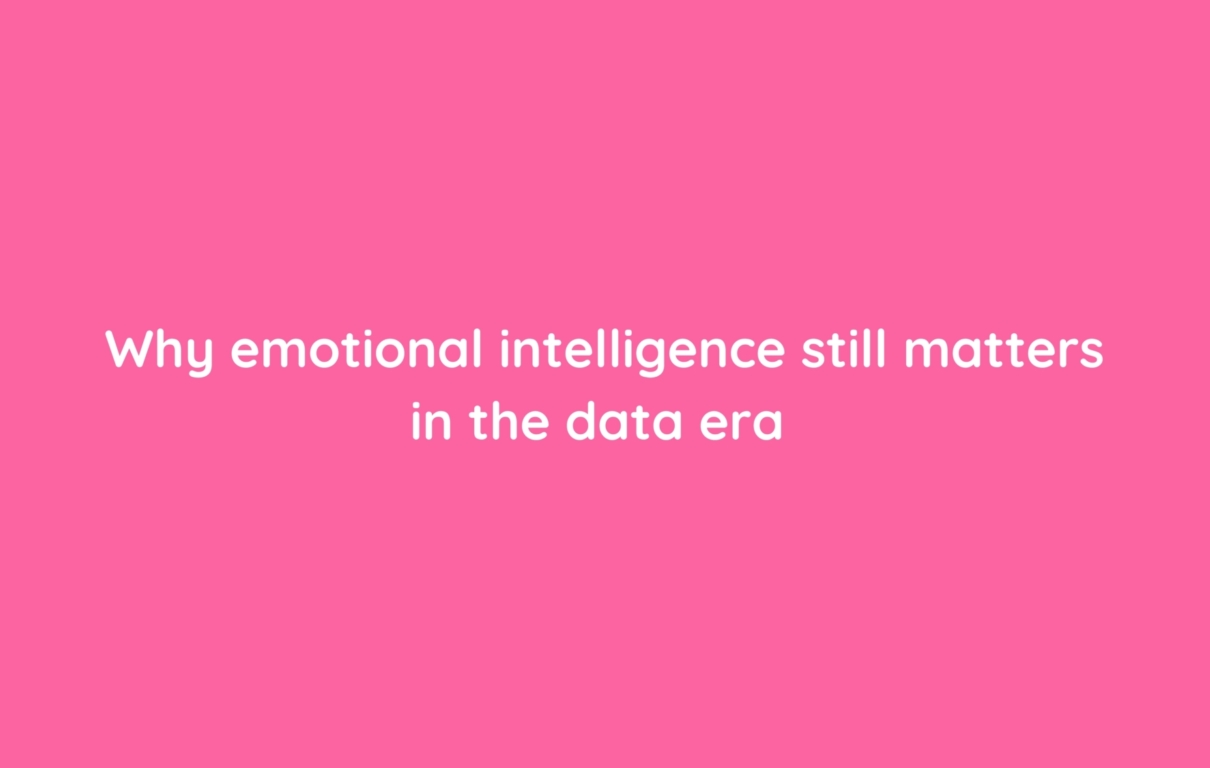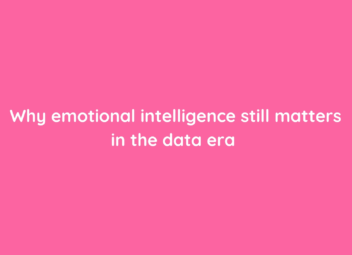
Does your story feel right? Here’s why thinking still trumps data. In our opinion, of course…
We live in the age of data. Every click is tracked, every post is measured, every campaign has a dashboard somewhere, quietly churning out charts, graphs and percentages. Don’t get us wrong - we love data. At Clearbox, we use it daily to measure impact, track trends and prove return on investment.
But here’s the thing no dashboard can tell you - does your story feel right?
We think that in PR (and in life, but we’ll not get that deep today lol), emotional intelligence still matters. In fact, in an era obsessed with metrics, it matters more than ever.
Numbers tell you what. People tell you why.
Data is brilliant for showing us what happened. For example:
- How many people read the article.
- How many people the campaign reached.
- How many people engaged with the post.
- How many listened to the podcast.
But data can’t tell us why a journalist rolled their eyes at a press release, why a tweet fell flat (we refused to call it X), or why an audience connected emotionally with one brand and ignored another.
That’s where human instinct comes in. Emotional intelligence - the ability to read the room, understand context, and tune into how people feel - is the thing that transforms numbers into meaning.
At Clearbox, we’ve run thousands of campaigns where the coverage numbers were off the charts in the last 12 years.
But what really mattered? Whether those stories resonated. Were people inspired? Amused? Reassured? Did the message land in a way that built credibility and trust?
If the answer was yes, that’s impact. That’s reputation. And that’s something no dashboard can capture.
Why feeling right matters in PR
Let’s say your data shows that video content drives 60% more engagement than static posts. Great insight. But does that mean you should make a video of everything? Not necessarily.
If you’re launching a serious piece of corporate research, a slick 30-second TikTok might be the wrong move, no matter what the numbers say. The audience expects authority, not emojis.
Or let’s talk about media relations. Data can show you which outlets have the biggest reach. But emotional intelligence tells you that the right outlet is the one audiences trust - not just the one with the highest circulation.
It’s about balance. Data guides us. Instinct makes sure it impacts.
Data can predict. Emotional intelligence can prevent.
This is a biggie for us. One of the most valuable things emotional intelligence brings to comms is risk awareness.
A data set might show you that a controversial topic is trending. But your instincts tell you ‘if we jump into this conversation, it could backfire’.
A monitoring tool might highlight a spike in mentions. But your human judgment says ‘actually, these comments aren’t genuine—they’re bots’.
We’ve sat in many meetings where the graphs suggested one course of action, but our gut told us another. And time after time, the gut was right. Not because we ignored the data, but because we layered experience and empathy on top of it.
That’s the magic of emotional intelligence - it sees the human impact behind the numbers.
So what’s the winning formula? Head AND heart.
At Clearbox, our approach is simple: we use data to sharpen our thinking, but we never let it replace it. Let us give you some examples:
Media monitoring tools tell us what’s being said. Our team interprets what matters.
Engagement rates show us what content is landing. Our instincts tell us why.
Coverage metrics count the hits. Our experience ensures they’re the right hits in the right places.
This balance of head and heart is what makes a campaign measurable AND meaningful.
Here’s the craic: no one ever bought a product, backed a brand, or shared a story just because of the numbers. They did it because they felt something. And those feelings are where reputations are made.
Look at the Oasis tour this summer. The numbers told us all the gigs would be popular and they’d be a big act. However, numbers couldn’t predict how people would feel at those gigs and how that breadth of feeling would translate into musical and commercial success.
Emotion even caught Noel Gallagher cold during the band’s first gig for 16 years:
“I grossly underestimated what I was getting into… After about five minutes I was like, ‘All right, can I just go back to the dressing room and start this again?’ I’ve done stadiums before and all but, but I don’t mind telling you my legs are turned to jelly after about halfway through the second song.”
Data put that tour on. Emotion took it to the next level.
So, does your story feel right?
In today’s world, it’s tempting to chase data like it’s the whole picture. But as seasoned PR people, we know better. Numbers matter, but so does nuance.
When you work with Clearbox, you’re not just getting charts and dashboards (but we do give you those). You’re getting a team that listens, interprets, and challenges. A team that blends insight with instinct. A team who knows when the metrics look good but the message doesn’t feel right, and isn’t afraid to say so.
Because in an era of endless data, emotional intelligence is your competitive advantage.
And when you have both - strong numbers and strong instincts - you don’t just run a campaign. You tell a story people remember.


